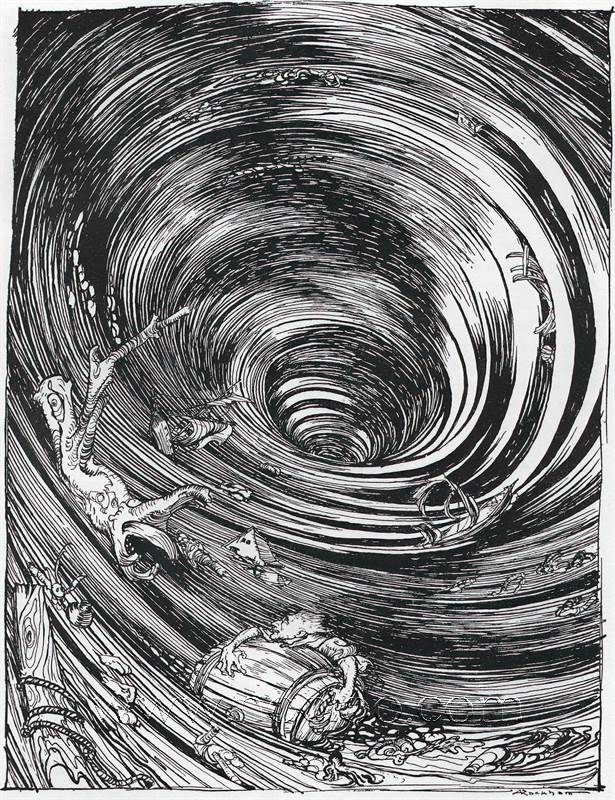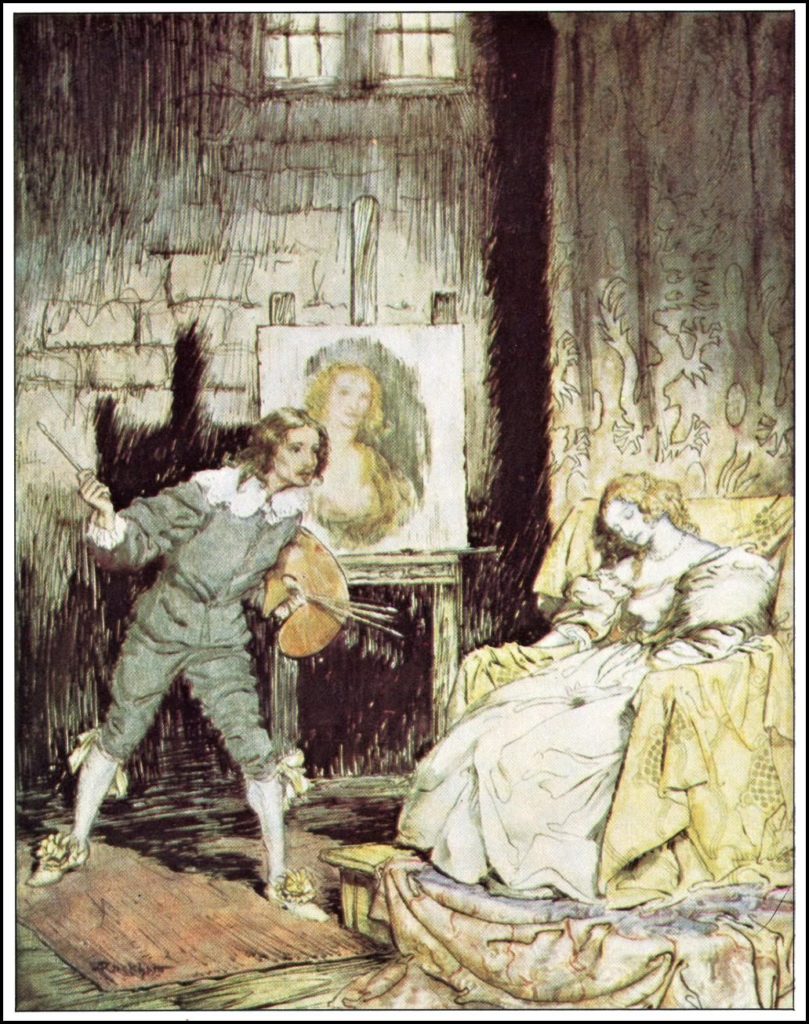

Boards Hard front and rear covers of a bound book which are covered in cloth, leather or paper.Association Copy copy that belonged to someone connected with the author or the contents of a book.Armorial Used to describe a binding bearing the coat of arms of the original owner, or with bookplates incorporating the owner’s arms.Although the name contains the word “tint”, this is a black-and-white printing process aquatint plates can often be hand colored, however. By changing the areas of the plate that are exposed and the length of time the plate is submerged in the acid bath, the engraver can obtain fine and varying shades of gray that closely resemble watercolor washes. Aquatint Copperplate process by which the plate is “bitten” by exposure to acid.Without original glassine and original matching slipcase. According to a friend, the artist referred to these illustrations as so full of horror "he was beginning to frighten himself" (Carpenter & Prichard, 439).


Rackham reflected late Victorian psychological insights in his dramatic illustrations for 25 of Poe's most haunting tales, among them "The Tell-Tale Heart," "The Pit and the Pendulum," "The Masque of the Red Death," "The Fall of the House of Usher" and "The Murders in the Rue Morgue." The artist "produced threatening images both of the grotesque and of enchanting beauty" (Leslie Atzmon). Housed in a custom see-through slipcase.įirst edition, number 93 of only 460 copies signed by Rackham, illustrated with 12 mounted full-page color plates, 17 full-page black-and-white drawings and pictorial black-and-white endpapers, all by Rackham. Quarto, original full vellum with gilt-pictorial decorations on cover and spine, pictorial endpapers, top edge gilt, uncut. Tales of Mystery & Imagination by Edgar Allan Poe, Illustrated by Arthur Rackham. “RACKHAM WAS BEGINNING TO FRIGHTEN HIMSELF”


 0 kommentar(er)
0 kommentar(er)
